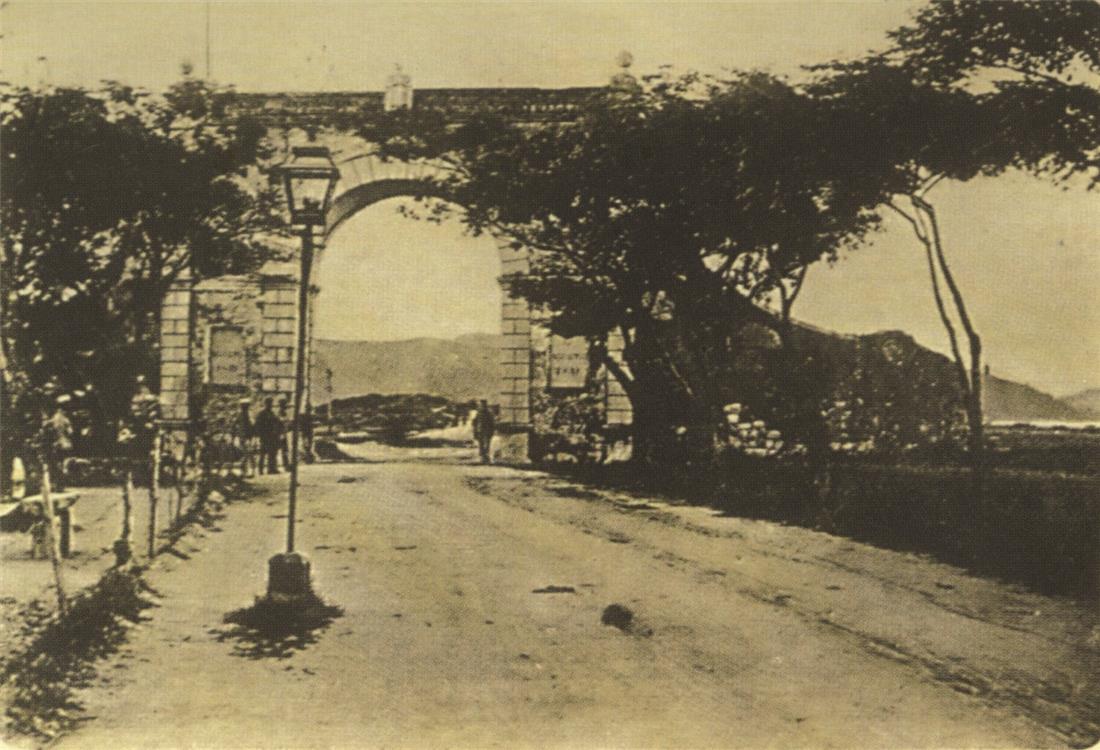Istmo de Ferreira do Amaral and Border Gate
Istmo de Ferreira do Amaral begins from Portas do Cerco Square in the north, and extends to Estrada do Arco in the south. It is 483 metres in length and approximately 6 to 10 metres in width. The road is straight and is divided into northern and southern sections. The northern section, 123 metres in length, is from the Portas do Cerco Square to the intersection of Rua Marginal do Canal das Hortas and Rua Da Tribuna. The intersection is at the end of the traffic lane where there are few vehicles. The southern section is from the intersection to the Areia Preta Triangle Garden. In 1869, the road was renamed Istmo de Ferreira do Amaral, in commemoration of the Governor Amaral, who was assassinated by a Chinese. The name of the road was published in the “Bulletin of the Government of Macao” on July 26 in the same year.Formerly, Macao was an isolated island. As mud piled up, a narrow sand bank, 10 miles in length and a few “zhangs” (a unit in Chinese linear measurement slightly longer than ten feet) in width initially, was formed gradually between the island and the Heangshan Island in the north. The sand bank was known as “Lotus Stem”, functioning as a transportation stronghold between Macao and Mainland China. In the 2nd year of the Wanli period (1574), on the sand bank connecting the pennisula with the Heangshan County, the government of the Ming Dynasty constructed the Border Gate in Chinese architectural style as a separation between the Chinese and foreigners and a defence portal. In 1848, Amaral constructed a road which extended from Rua do Campo to the Border Gate forcefully, and cleared a large number of graves which belonged to the villagers, which exasperated the villagers in Longtin and Mongha. At sunset on 22 August 1849, Amaral was assassinated by Shum Chi Leong (Shum Mai) near the Border Gate. Shum and his partners retreated from the Border Gate to Mainland China, cut off one of Amaral’s arm and head and brought them back to worship the ancestors. In the early 1870s of the 19th century, the Portuguese administration of Macao forcefully demolished the gate building of the Chinese Border Gate, and built another large border gate in the Triumphal Gate style in the north as the border between Mainland China and the Portuguese colony. In July 1952, armed clashes broke out between the Portuguese Macao army and the Chinese frontier guards in the surrounding area. In 1993, the Portuguese administration of Macao resumed the immigration check and built the former immigration verification building. In 2004, the new frontier post and Portas do Cerco Square were completed, and the Border Gate , remains as a historical site, which has borne witness to the past years of the border between Macao and Mainland China. The dates carved on the surface of the Arch, such as “22 Agosto 1849”, “25 Agosto 1849” and “31 Outubro 1871”, marked the dates of the important events - the assassination of Amaral, the Portuguese army’s invasion of the Border Gate, and the construction of the Border Gate , etc.











